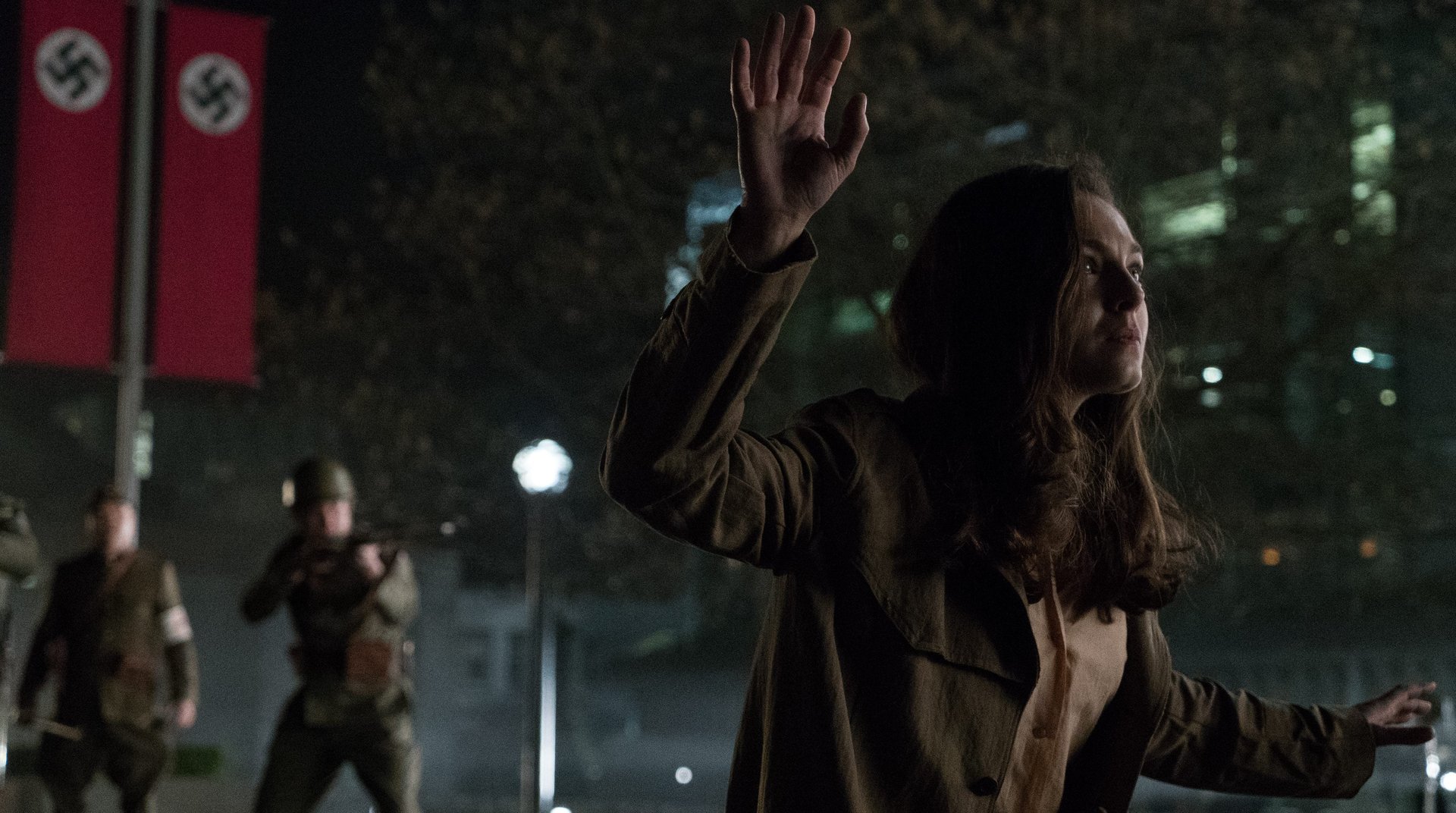Amazon’s TV show about an America ruled by Nazis takes on new meaning in the era of the alt-right
When Amazon first premiered its dystopian sci-fi thriller The Man in the High Castle—a TV show about a world in which the US lost World War II and is ruled by both the Nazis and the Japanese—the show truly felt like an alternate universe. In our world, it was 2015, same-sex marriage had just been ruled legal, the US had a progressive black president, and neo-Nazism was the farthest thing from most Americans’ minds.


When Amazon first premiered its dystopian sci-fi thriller The Man in the High Castle—a TV show about a world in which the US lost World War II and is ruled by both the Nazis and the Japanese—the show truly felt like an alternate universe. In our world, it was 2015, same-sex marriage had just been ruled legal, the US had a progressive black president, and neo-Nazism was the farthest thing from most Americans’ minds.
The show’s second season debuts today in a drastically different political environment.
The alternate reality manifested in the show doesn’t seem so far off when churches in California are being vandalized with swastikas, the “alt-right” movement has legitimized white-nationalism, and people feel comfortable enough to gather in Washington, DC to give Nazi salutes and shout: “Hail Trump, hail our people, hail victory!”
Which is kind of the point. Philip K. Dick’s 1962 novel of the same name, on which the show is based, suggests that the evil that was embodied by the Nazis was not defeated with them, but lives on, omnipresent, in our daily choices.
“Fortunately, we do not live under fascist rule and under a totalitarian regime,” David Zucker, an executive producer on the show, tells Quartz, “you always endeavor, taking on a historical subject, that it will have a real relevance and resonance to the audience. It’s something that we hope is entertaining but that it could be provocative and instigate conversation to better understand who we are and where we are and where we’re all heading.”
Dick’s original message comes through more clearly now than ever before, whether intentionally or not. (The book has served more as a reference guide than a blueprint, said Zucker, who also heads up TV at Ridley Scott’s Scott Free productions, which produces The Man in the High Castle with Amazon Studios and a handful of other companies.)
Whereas the first season of The Man in the High Castle emphasized how horrific a Nazi-controlled world could be—with brutal torture scenes, gassings, and “undesirables” such as the disabled and terminally-ill being burnt to ash—the first five episodes of the second season seen by Quartz humanize some of the fascist overlords, who seem to be struggling with the rules of the world they’ve built.
With the first season, “the audience had time to acclimate to this world, to orient to it, to feel an intimate familiarity with it, and most of all to find an identity and relationship with these characters,” Zucker said. The new season moves along at a quicker pace, in part, because of feedback from the first season.
“We knew that there was an eagerness to have a better grasp of the meaning of the films and to encounter the man in the high castle himself and in that sense, you see in season two, we don’t waste any time playing games with the audience,” said Zucker. “The goal is to continue to explore and dive as deep into this material as possible.”
Preparing for a second season of a controversial show like The Man in the High Castle at a network such as Amazon, which doesn’t share traditional performance metrics like ratings, viewership demographics, and advertising revenue, can be daunting. But Zucker said it’s just another way the show is unique.
“We’re not at all guided by or influenced by the demographics of the audience, what episodes the audience is showing up for, where some of them may have been less engaged,” he said. “This is all information we don’t really have.”
The production wasn’t flying entirely blind. It listened to buzz about the show, critical reception, and feedback from the audience. (Zucker also said his 85-year-old mother—who would have been a child during the Second World War—also watched the show from start to finish, which is rare for her; she didn’t hold back on what she thought.).
Creative and budgetary talks with Amazon also shaped the direction the season; the tech company has plenty of quantitative data on the show, whether it reveals it or not. ”They have all kinds of measurements and calculations,” Zucker said. ”I don’t know what goes on in the magic of Seattle.” Zucker said the talks focused mainly on the relevance, resonance, and level of engagement of the stories, as well as what Amazon thought of the material, and what the producers needed to bring it to life.
The new season, while markedly less brutal at the outset than its predecessor, makes no attempts to shy away from the Nazi memorabilia, discriminatory rhetoric, and overall strife that pulled viewers into the world to begin. And Zucker said that they haven’t held back because of the current political climate.
“It hasn’t changed what we’ve undertaken,” Zucker said. “This is baked into the world that we’re dramatizing, and how the audience will engage with it and how it may or may not affect them is not for us to say.”